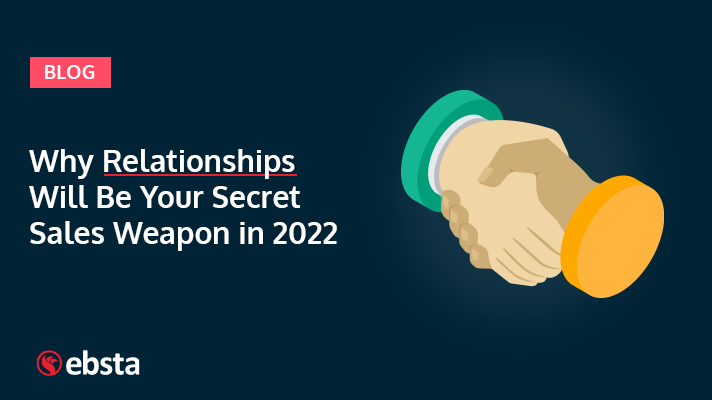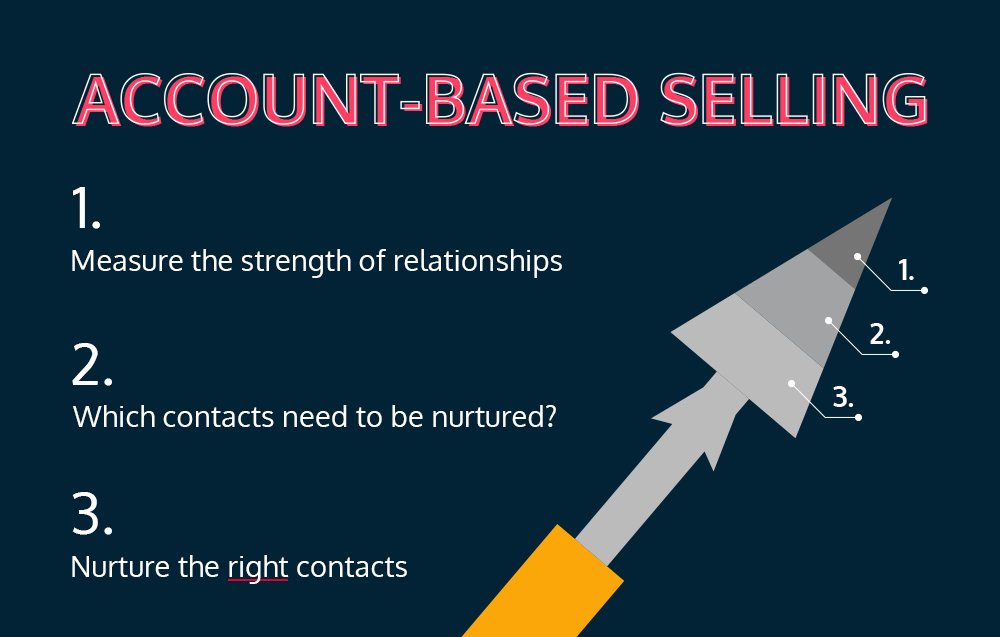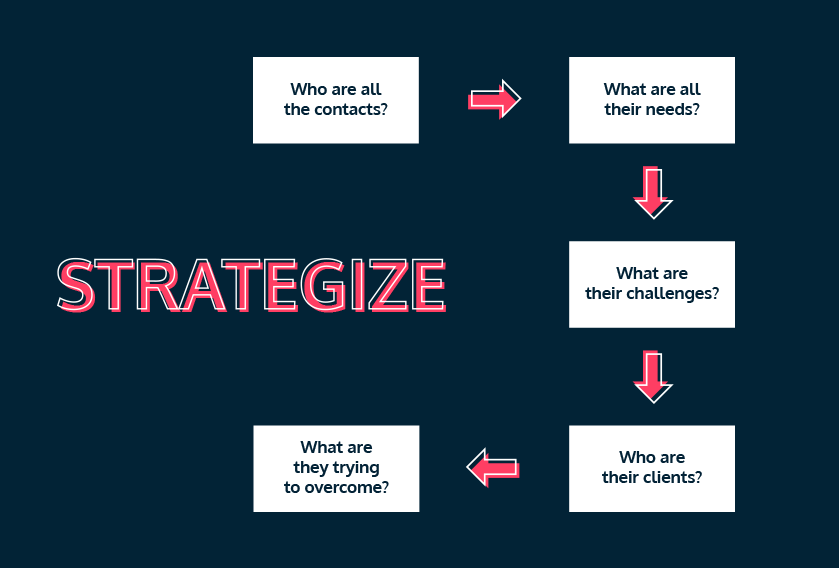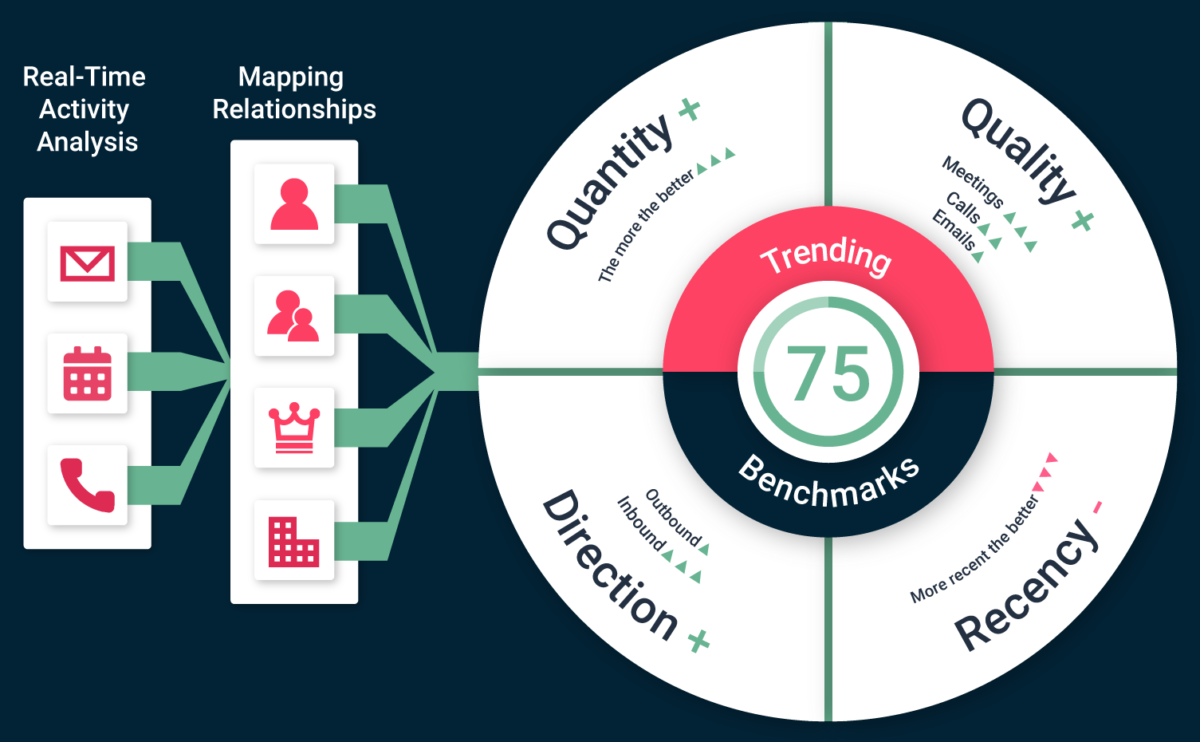
Why Relationships Will Be Your Secret Sales Weapon in 2023
The Problem
People buy from people. The old adage still rings true.
Building relationships with the right stakeholders is the key to pushing deals forward. In our latest B2B Sales Benchmarks Report, we analyzed over 3 million sales opportunities of pipeline and uncovered;
- the optimal number of relationships for each deal size
- the right number of relationships on a deal can accelerate your deals through your pipeline faster.
For small companies, there may just be one decision-maker whereas for enterprise companies, there can be 5 or more. In this situation, salespeople typically take two approaches – approaching the entire committee or desperately trying to identify who is the key decision-maker.
This is where relationship strength comes in. Relationship strength allows you to gauge whether or not the key decision-makers are being correctly nurtured.
The Pareto principle states that 80% of results come from only 20% of your actions and improving your relationship strength refines your sales process by honing in on the 20% that can move the needle for your business.
Measuring the strength of your relationship with each individual in the buying committee allows you to assess how engaged you are with them. This increases your chances of success as you can focus your efforts on building relationships with the right people.
The Solution – Account-Based Selling
Account-based selling is the process of planning a strategy of attack for each account, selectively choosing who to nurture to increase the chances of success, and then nurturing those contacts.
Account-based selling takes a more personalized approach by treating every account like a market of one. Essentially, marketing and sales substitute a large net for a harpoon tailored to catch specific accounts.
How do you identify which contacts should be nurtured?

By measuring the strength of relationships. This helps you to unlock how well key decision-makers are engaged, prioritize relationships with stakeholders who matter most, and build a process that you can refine and improve over time.
Account-based selling has the potential to drive more wins, shorten your sales cycle and close larger deals for your businesses and here is how:
Step 1 – Strategize
To target each account you need to gain a comprehensive understanding of the ins and outs of each business.
We’ve come up with 5 questions (the 5Ws) you should address to help you to develop a more personalized approach. You are more likely to close a deal if you reach out to a contact with a solution to a problem rather than a product.
- Who are all the contacts?
- What are their needs?
- What are their challenges?
- What are their desires?
- What are they trying to overcome?
The B2B space is a crowded one and the customer experience plays a significant role in the end result. Approaching an account with a personalized touch will help you to stand out from the crowd. By understanding the exact positioning of an account, you are able to provide answers to questions that have not even been asked.
Here is a breakdown of how to create your strategy:
Start by outlining your goals for your sales play. How much revenue are you trying to generate? How many licenses are you going for? What target do you need to hit to close this account successfully?
Question 1 in the 5Ws covers who all the contacts are within an account. Now you need to take this a step further and figure out who is on the buying committee. You want to specifically target these individuals and learn what their pain points are, what the best way to help them is, and who this decision affects most. Step 2 dives into this in more detail.
You’ve narrowed down who’s in the buying committee. Mapping out these relationships is a great way to visualize the buying committee. It allows you to see who reports to who and who, who you already have existing relationships with, and who you need to start building relationships with.
Large organizations often have several departments involved in the decision-making process such as legal and security teams. If these teams are neglected in your strategy, they can act as blockers for you in the future. So, leave no stone (or team) unturned.
Last but not least, finalize your plan of attack. Communicate with your team to see if there are existing relationships you can leverage, who the key members of the buying committee that you are going to prioritize are, and who on your team is responsible for these committee members.

Step 2 – Identify Your Champion
A champion is a person who is willing to give you all the information you need to accelerate your deal.
First, you need to identify all the key decision-makers in the organization. You should be building relationships with all of these stakeholders.
Instead of getting information from here, there and everywhere, your champion can save you a lot of time and provide you with all the information you could possibly need.
The 5Ws will help you to identify the candidates most likely to be your champion. This person may not be the most important decision-maker on paper but their influence can carry a lot of weight in the final decision-making process.
Building a strong relationship with this person is critical as they will act as an advocate for your product or service and spread the word to their colleagues. Think about it this way: the stronger your relationship with the champion, the more likely you are to win this account.
This is based on the logic that you are more likely to take on board information about a product from a colleague whereas you may have some resistance when it is coming from a salesperson.
Step 3 – Benchmark It
Benchmarking allows you to identify what worked well and what could have been better by isolating each part of the process. Essentially, you are taking learnings from your historic deals which gives you an average based on previous performance. This is then used to identify which deals performed above that benchmark and which deals performed below.
You can then take those learnings into the key next key accounts you target.
Find your benchmarks by analyzing historic deals to identify which job titles were most likely to unlock a deal, or most likely to act as a champion. Which roles helped you get to the finish line when you won a deal and which roles were involved when you lost a deal?
This allows you to begin building frameworks for success by understanding who the key decision-makers are, who the champions are most likely to be, and which roles you need to nurture to push deals over the line.
The beauty of this approach is that you can create benchmarks for different segments. Different relationships for different industries, different companies sizes, different regions, etc.
Step 4 – Implement Strategy
In step 2, we covered prioritizing relationship building with the buying committee, especially your champion. Now, this step is all about prioritizing engagement – not just activity.
First things first, you need to find what activity you are going to target towards each member of the buying committee.
Activity looks at the number of calls, emails, and meetings that have been booked. Whereas, engagement makes sense of this communication.
Then, the next step is to measure engagement to understand the effectiveness of your approach, and then identify which activity is working and which needs to be re-thought.
Engagement covers the total activity count and days since last activity, but it also looks at the type of activity, its direction (inbound/outbound), duration, and timing. Measuring engagement contextualizes activity.

Keeping track of activity brings visibility to who knows who within an account and whose relationships can be leveraged. Whereas, measuring engagement allows you to understand the strength of your relationships.
Simply put, it is all about the quality of your interactions with the buying committee – not just the quantity.
Engagement provides context;
- You are sending emails – but are they replying?
- You are calling them – but are they picking up and actually talking to you?
- You are scheduling meetings – but do they actually attend?
Engagement scoring reveals how effective your activity is. It allows you to see what forms of communications are landing with who. This tells you what accounts require a different approach. Giving your team the ability to collaborate better to save time on introductions and work through the customer lifecycle together.
Step 5 – Reporting
The final step is for teams to report back on what they’ve learned from the benchmarks as well as the overall process. Learnings from every deal can then be applied to improving your strategies and finding a process that works for each individual segment.
Reporting is not a one-off thing. You should be holding reporting meetings at least once a month. This gives you a chance to compare performance to your benchmarks to see how you are pacing. Reporting is very important as it allows you to identify the areas that worked and areas that need improvement.
Alex Freeman, Head of Delivery at Ebsta, recently hosted a webinar where he covered how high-growth companies leverage benchmarks and reporting to maximize their pipeline growth from high-priority accounts. Learn how to implement account-based selling with Alex to generate as much revenue as possible from selected accounts today!
Every small win is contributing to the bigger picture as these small wins are used to create improvements that have a big impact on your business. This is known as marginal gains.
Marginal gains are a crucial part of an account-based selling strategy. For example, in step 3 – we measure engagement to see which activities work well with different stakeholders and which activities do not. The activities that work well can be leveraged in the future to optimize your selling strategy hence resulting in marginal gains.
Another example of marginal gains is step 4 – benchmarking. By identifying who the most likely champion is going to be, you will not waste time trying your luck with different stakeholders who may not provide you with any value. Losing a certain number of accounts is inevitable but understanding what sets apart a champion from a stakeholder can significantly improve your chances of winning an account.
Account-based selling is about taking more of a personal approach. After all, no two people are the same so why would you approach them in the same way?
If we apply the same logic to businesses, this is where account-based selling works its magic. This strategy is about being efficient with your resources and time, reaching out to every touch-point within a business, and is perfect for enterprise companies!
Share this article
Sign up for Insights
Learn from the brightest minds how to predictably and efficiently grow revenue.
Related Content
How to Build Powerful Channel Partnerships
What if the secret to exponential growth isn’t just hiring more salespeople, but rather, building strategic channel partnerships that multiply your reach and credibility? In this illuminating episode of Revenue Insights, Alex Rich, VP of Sales North America at GitGuardian, shares deep insights from his journey from product management to sales leadership, revealing how strategic…
AI in Sales: Transforming Sales Performance in 2025
Just like any other industry, the sales world is undergoing a massive transformation. What worked yesterday no longer guarantees success today, and the pressure to perform has never been greater. As buyer behaviour evolves, one thing becomes crystal clear: we need a new approach to enabling our sales teams to operate in new realities. Michael…
52% of Revenue from Existing Customers; But Renewal is No Longer Guaranteed
How modern revenue operations and subscription economics are reshaping enterprise software sales. You can’t rely on existing customers queuing to renew. In today’s rapidly evolving B2B landscape, the old playbook for enterprise software sales is becoming increasingly obsolete. Five years ago, subscription renewals were almost automatic. Now, as EDB’s Chief Revenue Officer Hervé Timsit reveals,…